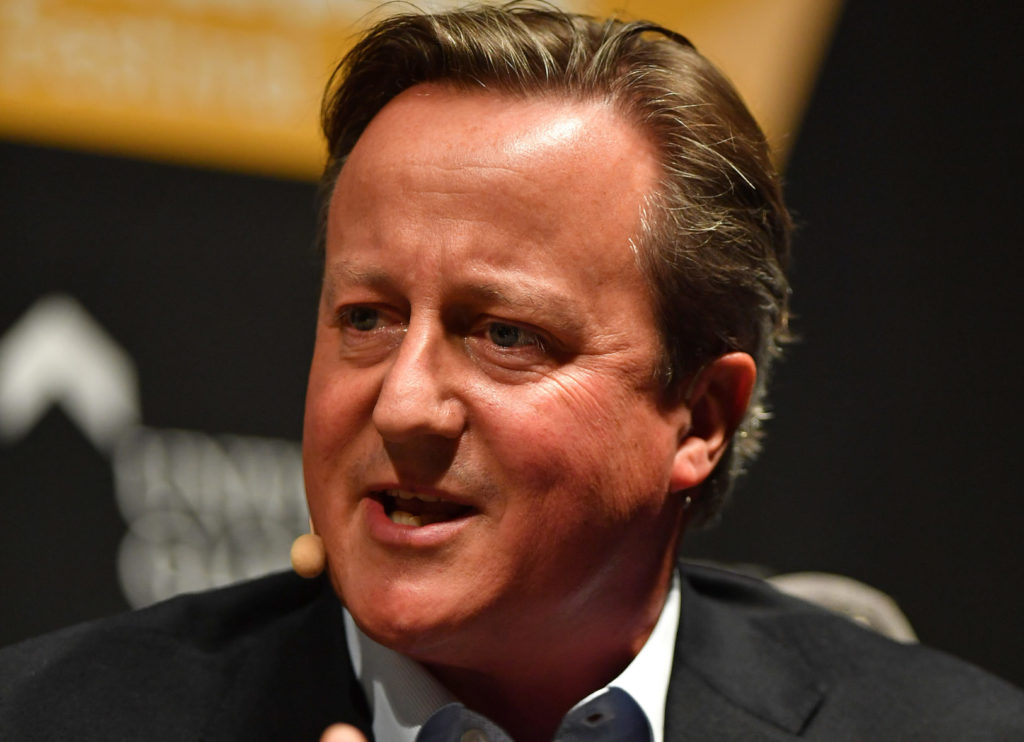David Cameron’s shock appointment today as foreign secretary makes him just the second former prime minister since the second world war to return to cabinet.
Cameron’s only post-war forebear is Alec Douglas-Home, prime minister from 1963 to 1964. He also became foreign secretary, serving under Edward Heath from 1970 to 1974.
William Hague, who served as leader of the Conservative Party from 1997 to 2001, returned as David Cameron’s foreign secretary.
Sir Iain Duncan-Smith, who served as leader of the Conservative Party from 2001 to 2003, served as secretary of state for work and pensions from 2010 to 2016 — also under David Cameron.


Before the Second World War, Arthur Balfour, prime minister from 1902-1905, returned to government first as the first lord of the admiralty in the wartime coalition and then as foreign secretary under David Lloyd George (PM from 1916 to 1922).
During WW2, Neville Chamberlain served as lord president of the council in the cabinet of Winston Churchill, who had succeeded him as prime minister.
Cameron served as prime minister from 2010 to 2016.
He led Britain’s first coalition government for 70 years and, following the 2015 General Election, formed the first Conservative majority government for over two decades.
David Cameron stood down as an MP in 2016 very soon after resigning as prime minister, following the Brexit referendum. Cameron initially maintained a low-profile after leaving Downing Street and during the subsequent Brexit negotiations.
While stating that he did not regret calling the 2016 referendum, he has told The Times it had left him ‘hugely depressed’ and understands that ‘some people will never forgive me’.
In 2016, Cameron became Chairman of Patrons at National Citizen Service (NCS), a youth development programme. He is also President of Alzheimer’s Research UK.
Further to these roles, Cameron advised a number of international businesses – concentrating on innovative technology-driven sectors, including Fin-Tech, Medi-Tech and Artificial Intelligence.
In March 2021, it was revealed that Cameron was employed by Greensill Capital, a firm that has subsequently collapsed. It was reported that Mr Cameron sent several texts to Chancellor Rishi Sunak and held a number of virtual meetings with permanent secretaries in Whitehall to try and secure coronavirus support payments for Greensill.
Cameron, who following the 2009 controversy around MPs expense claims, had mused that lobbying would be the next big political scandal, was now himself in a lobbying furore.
Cameron was first elected the Conservative MP for the rural constituency of Witney in West Oxfordshire in 2001. From 2001-2003, Cameron was a member of the influential House of Commons Home Affairs Select Committee.
He then occupied a number of shadow Cabinet jobs. After the 2005 General Election, he was appointed Shadow Secretary of State for Education and Skills.
When Michael Howard announced his resignation as leader of the Conservative Party following Labour‘s third consecutive General Election victory in 2005, Cameron declared his candidacy in the subsequent leadership election.
Some of his high-profile supporters included Boris Johnson, George Osbourne, Michael Ancram, Oliver Letwin and former party leader William Hague.
Cameron beat David Davis to claim the Conservative party‘s leadership. He then worked to modernise the party, setting it on its path to government.
Politics.co.uk is the UK’s leading digital-only political website, providing comprehensive coverage of UK politics. Subscribe to our daily newsletter here.

